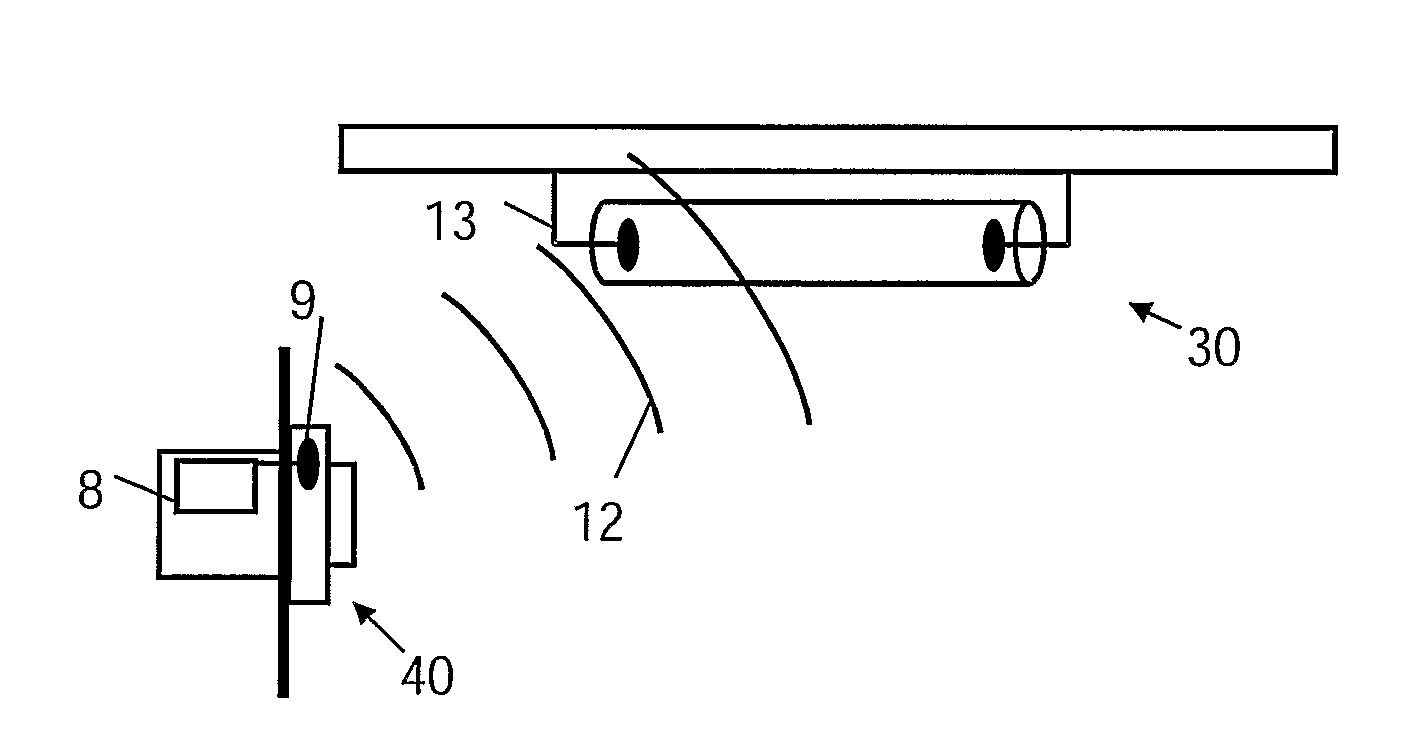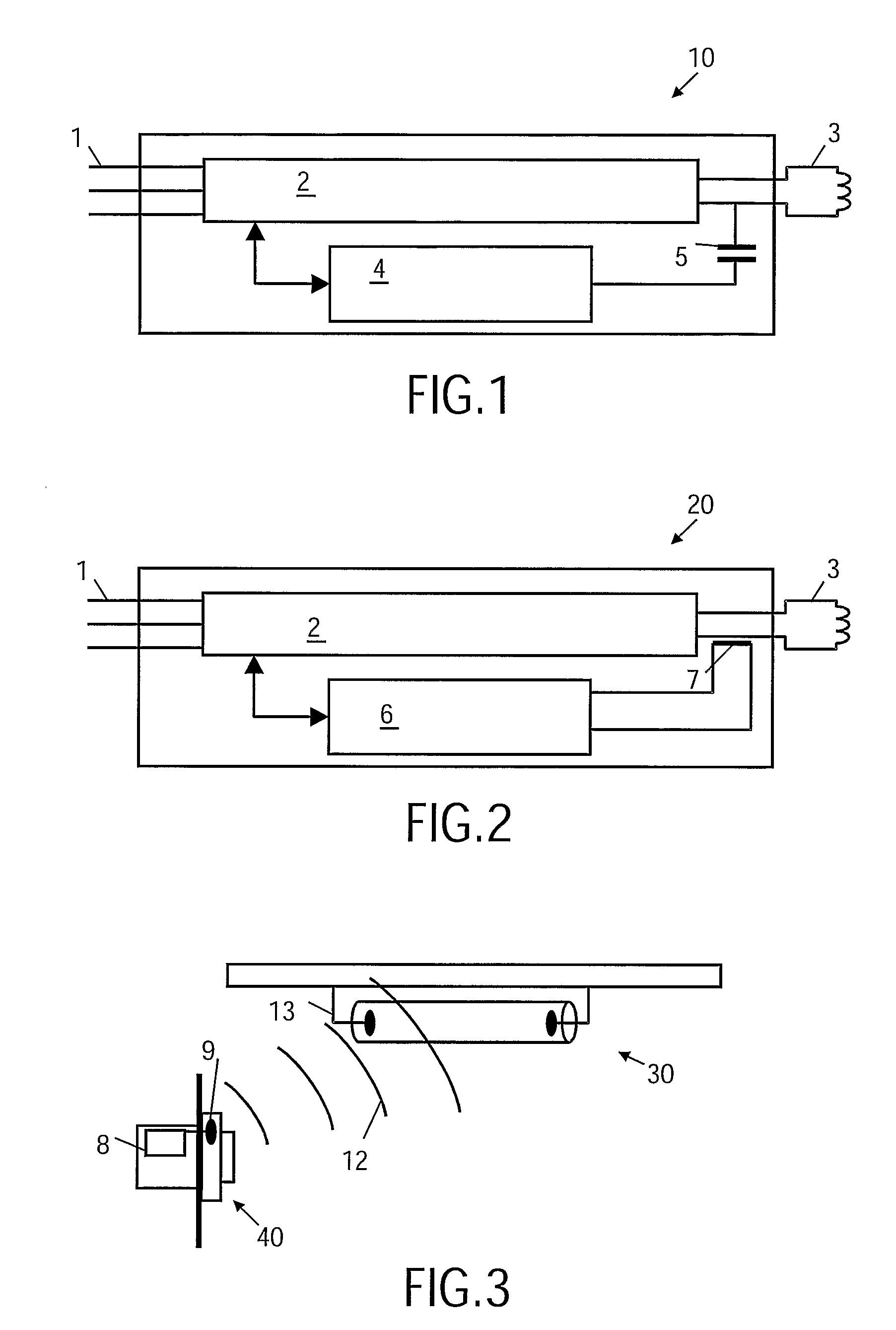Antenna through the use of lamp electrodes
a technology of lamp electrodes and antennas, applied in the direction of electric controllers, instruments, ignition automatic control, etc., can solve the problems of blocking the transmission and reception of electromagnetic signals, complicated situation, etc., and achieve the effect of improving the wireless control interface, alleviating or reducing one or two
- Summary
- Abstract
- Description
- Claims
- Application Information
AI Technical Summary
Benefits of technology
Problems solved by technology
Method used
Image
Examples
first embodiment
[0026]a device 10 according to the present invention is illustrated in FIG. 1. The lamp is in the illustrated embodiment a fluorescent lamp. The figure illustrates the main components present in a lamp driver. The lamp driver is connected to mains 1 for example by direct cable connection to live (L), neutral (N) and possible protective earth (PE) of a mains network. The lamp driver comprises a driver circuit 2 capable of controlling light emission, thus capable of at least starting the emission process of a fluorescent lamp and maintaining a substantially constant light emission level from the lamp. The lamp driver circuitry is communicatively connected to a control interface 4. The control interface 4 being able to extract or impose an alternating signal from or to the at least first electrode 3 by use of a capacitive coupling 5.
[0027]The control interface 4 receives or transmits data to or from an external unit through the at least first electrode 3 being the antenna. In the recei...
embodiment 20
[0028]In FIG. 2 a different embodiment 20 is illustrated. In this embodiment the control interface 6 is able to extract or impose an alternating signal from or to the least first electrode 3 by means of an inductive coupling 7. As an example of an inductive coupling a Lecher line transformer may be used.
[0029]Wireless communication between a wall unit 40 and a fluorescent lamp 30 is illustrated in FIG. 3. The wall unit acts as an interface for a user to communicate control signals to the lamp, such as turning the lamp on or off, dim the ballast of a fluorescent lamp, etc. The wall unit comprises a wireless communication circuit 8 including an antenna 9. The antenna may be completely comprised within the wall unit by fabricating the wall unit in a suitable material, such as a material which is transparent to electromagnetic radiation, e.g. plastic.
[0030]The wall unit may transmit an electromagnetic signal 12 that can be received by the lamp by use of one of the electrodes 13 as an an...
PUM
 Login to View More
Login to View More Abstract
Description
Claims
Application Information
 Login to View More
Login to View More - R&D
- Intellectual Property
- Life Sciences
- Materials
- Tech Scout
- Unparalleled Data Quality
- Higher Quality Content
- 60% Fewer Hallucinations
Browse by: Latest US Patents, China's latest patents, Technical Efficacy Thesaurus, Application Domain, Technology Topic, Popular Technical Reports.
© 2025 PatSnap. All rights reserved.Legal|Privacy policy|Modern Slavery Act Transparency Statement|Sitemap|About US| Contact US: help@patsnap.com


